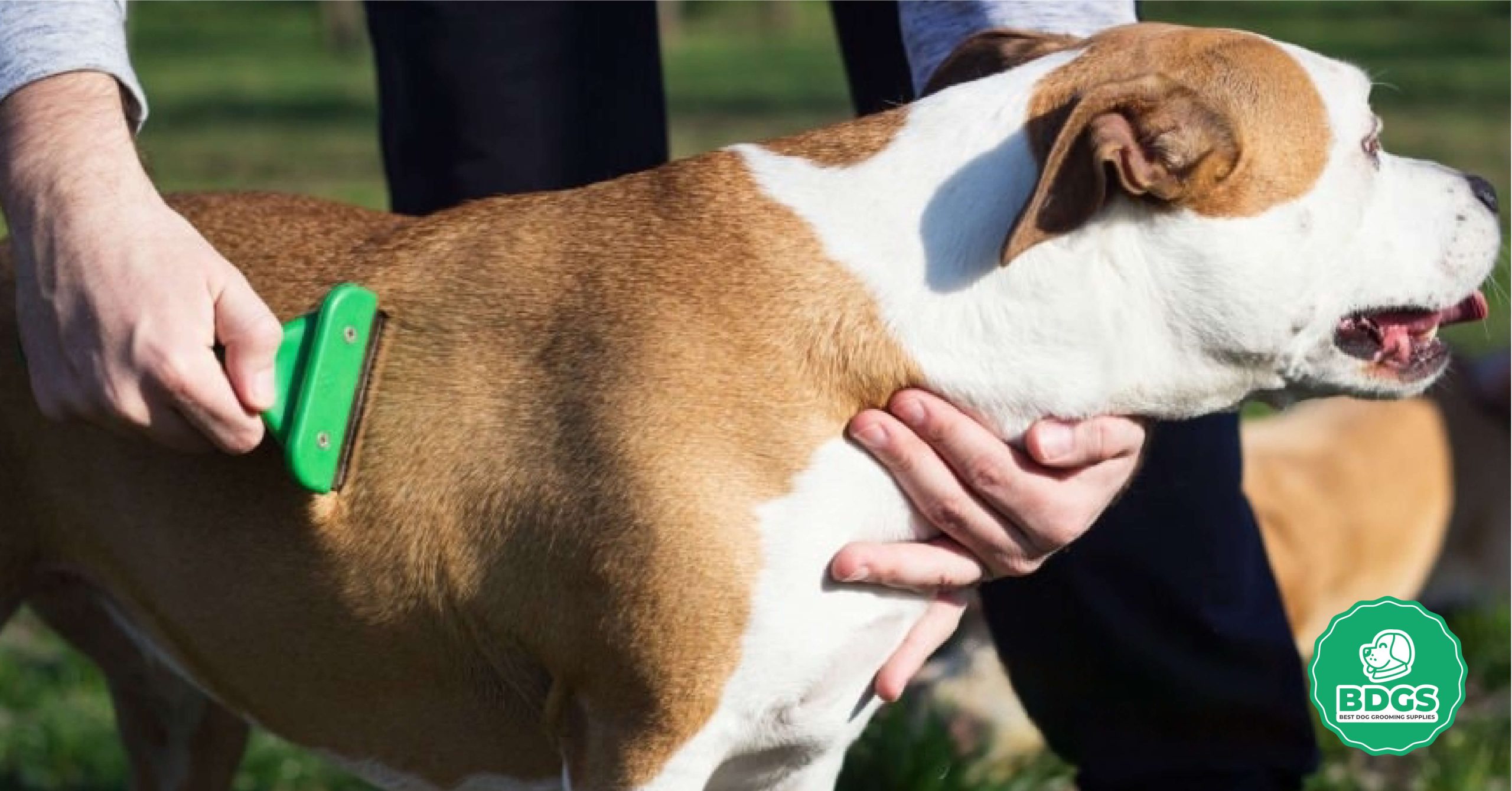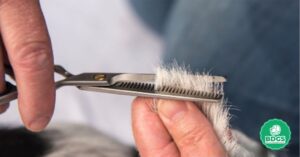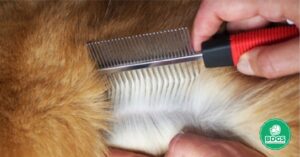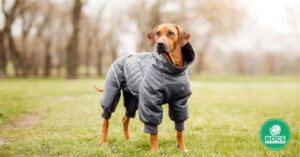Are your clothes and furniture covered in your pet’s hair? The deshedding tool can help dog owners who have this problem. This easy-to-use but powerful tool can dramatically improve the lives of dog owners, especially those whose dogs shed a lot. You’re looking for information on what a deshedding tool is.
A deshedding tool is a unique cleaning tool that lowers the amount of loose hair on your dog’s fur. Dog owners who want to keep their home clean and their dog looking and feeling great will love this. If you have the right deshedding tool, you can keep your pet from shedding too much and that annoying furball from taking over your house.
We’ll discuss deshedding tools in this article, including the best ones for dogs, how to use them, and which ones are best for short-haired breeds. Finding the best dog deshedding tool is essential to keep your furry friend happy and your home free of fur.
What types of pets use deshedding tools?
Most of the time, deshedding tools are used on cats and dogs. Pet owners who want to keep their homes clean and their pets comfortable often choose these cleaning tools because they help reduce the amount of extra fur on your pets.
Most of the time, deshedding tools are used on dogs and cats, but they can also be used on rabbits and some small mice as long as the tool is safe and suitable for their fur type.
There you have it. If you have a dog, cat, or other hairy pet, a deshedding tool might be handy. It helps your dogs look their best and cuts down on pet hair in the house, which makes everyone happy and more relaxed.
What are the different types of deshedding tools?
There are different kinds of deshedding tools that pet owners can use to keep their furry friends from shedding. Most people have one of these types:
- Bristle Brushes: These brushes can have hard or soft bristles, and they can be used on dogs and cats with different types of coats. They eliminate free fur and spread natural oils around the skin to make it shiny.
- Rake Brushes: Rake brushes are suitable for cats with long, thick fur because the teeth are long and close together. To get rid of free hair, they dig deep into the coat.
- Undercoat Combs: These combs are great for pets with thick undercoats because the teeth are short and close together. They can help keep your pet from matting up and shedding too much.
- Shedding Blades: Flat metal tools called “shedding blades” are good at getting rid of loose hair and can be used on both dogs and cats.
- Slicker Brushes: Slicker brushes have fine wire pins that work well on cats with medium to long hair. They help get rid of knots and loose fur.
- Rubber Curry Brushes: These are great for cleaning your pet’s fur because they don’t hurt their skin. They are great for dogs with short hair and help remove loose hair while massaging the dog.
With grooming gloves, you can touch your pet and remove free fur simultaneously because the tips are rubber or plastic.
What type of coat uses deshedding tools?
Deshedding tools are used on dogs that have fur, especially ones that shed a lot. Dogs and cats with double coats, long hair, or thick skin will benefit the most from these tools. By removing loose or dead hair on your pet’s body, they keep it from falling out all over your house.
Even if your pet’s coat is short and smooth, they may not need deshedding tools as often. However, a gentle brushing can still keep their coat healthy and get rid of loose hair. If your cat has thick or long skin, on the other hand, you need deshedding tools to help control shedding and keep the coat from sticking.
So, if your pet has a coat that sheds or gets tangled easily, deshedding tools can help keep their skin in good shape and reduce the amount of extra fur in your home.
What is the design of deshedding tools?
Deshedding tools are made in a certain way to help you get rid of loose fur from your pet’s hair. It is how they’re usually made:
- Handle: When you’re cleaning your pet, you hold on to the handle of the deshedding tool. For a good grip, the handle is usually made of plastic or rubber.
- Head or Blade: There is a metal or plastic head or blade at the end of the handle. On your pet’s fur, this part will touch it.
- Teeth or Bristles: The long and short teeth or bristles on the head or blade change in length and spacing. These fibers or teeth are made to enter your pet’s fur and pull out free hair.
- Size and Shape: Deshedding tools come in different shapes and sizes, and some are made for specific coats. There are different types of brushes, combs, and blades for different kinds of pet fur.
What are the blade quality and durability of deshedding tools?
When picking out a deshedding tool for your pet, it’s essential to think about how well it works and how long it will last. Look for these things:
- Material: Most deshedding tool blades are made of stainless steel, which doesn’t rust and lasts a long time. Blades made of high-quality stainless steel that stay sharp for a long time are used in good deshedding tools.
- Coating: Some blades may have a protected covering, like titanium, that makes them last longer and work better. This covering may cut down on friction and make the blade last longer.
- Blade Edge: When selecting blades, look for precise edges that remove free fur without harming the pet’s skin. To prevent cuts or pain, all sides must be rounded or have safety edges.
- Blade Replacement: Some deshedding tools have blades that can be changed out when they get dull. It lets you get more use out of the tool for longer. It is a choice that will save you money.
- Ergonomics: In terms of ergonomics, the blade body should be solid and easy to hold. The body of an excellent deshedding tool will be strong and well-built to handle regular use.
What is the purpose of deshedding tools?
Deshedding tools help cat owners keep their furry friends from shedding, which is the process of losing old or loose fur. These tools are made to:
- Reduce Shedding: Deshedding tools are great for removing your pet’s free fur, which can help keep your home cleaner by keeping hair off of your furniture, clothes, and floors.
- Prevent Matting: If you use deshedding tools regularly, you can keep your pet’s fur from getting twisted or matted, which can be painful for them.
- Promote Healthy Skin: Deshedding tools can help your pet’s skin get more air by removing loose fur. It is suitable for their general skin health.
You can help your pet look and feel better by grooming them with a deshedding tool. It will make their hair look shiny and healthy, and it can also be a fun way for you and your pet to bond.
What are the drawbacks of deshedding tools?
There are some things you should know about deshedding tools before you use them to help you deal with your pet’s shedding:
- Overuse Can Irritate Skin: If you use deshedding tools on your pet too often or roughly, they may get skin irritation. Don’t press too hard; be careful.
- Not Suitable for All Pets: Deshedding tools work best for cats and dogs with double coats or a lot of hair that falls out. For pets with short, smooth hair, they might not need them.
- Can Be Uncomfortable: Some pets might not like having their fur rubbed off with deshedding tools. It is important to slowly introduce the tool to your pet and make sure they are as happy as possible with it.
- Not a Replacement for Regular Brushing: Deshedding tools work best with regular cleaning and brushing. They’re not a one-size-fits-all answer, so they might only work for some of your cleaning needs.
- Blade Maintenance: Some deshedding tools may need their blades replaced or serviced occasionally. So, the tool costs more and requires more care.
What is the budget for deshedding tools?
Tools for deshedding can be different prices based on how well they work and what features they have. Here’s a rough idea of how much it costs to lose tools:
- Low Budget (Under $10): You can find simple shearing tools in this price range. Even though they aren’t as strong and don’t look as good, they can still do the job for rare use.
- Mid-Range (Between $10 to $20): Prices in this range are where most people buy deshedding tools, which are between $10 and $20. Most of the time, these tools are better made, have more comfortable handles, and have blades that work well.
- High-End (Above $20): In this price range, you can find deshedding tools with high-quality blades, comfortable handles, and extra features like blades that can be replaced or systems that clean themselves.
Buyer Guides: How to Buy a deshedding tool
There are a few things you should think about when shopping for a deshedding tool for your pet:
- Pet’s Coat Type: Look at the hair on your pet. How long, short, thick, or fine is it? Different tools are better for getting rid of different kinds of fur. Pick a tool that goes with the color of your pet’s skin.
- Size of the Tool: There are different sizes of deshedding tools. The tool you choose should be easy to hold and move, and it should be the right size for your pet.
- Blade Quality: Check the tool’s blade or teeth to see how good it is. It should be made of high-quality materials, like stainless steel, and have safety features to keep your pet from getting hurt.
- Handle Comfort: It should be simple to hold on to and stay in place while you clean. Find a grip that feels good.
- Additional Features: Some deshedding tools have extras like blades that clean themselves or can be switched out. These might be useful, but they cost more.
- Pet’s Comfort: Think about how your pet feels about being cleaned. Pick a tool that they are used to using. For example, some pets may like brushes better than combs.
- Budget: Figure out how much money you have to spend and look for a tool that is a good mix of price and quality.
- Read Reviews: Before you buy, find out what other pet owners thought of the tool by reading reviews.
Keep in mind that deshedding tools can be a great addition to the way you clean your pet, but you should be careful and follow the directions strictly. It will help keep your pet’s fur healthy and your home free of extra hair.
Frequently Asked Questions
To use a deshedding tool, follow these steps:
Make sure your pet is comfortable and calm.
Use light, even strokes to brush or comb your pet’s fur in the direction of hair growth.
Watch out for the ears, tail, and belly, which are all sensitive spots.
If you need to, take off the extra fur from the tool to keep it working.
Regularly use the deshedding tool to keep up with shedding and avoid mats.
The best tool for deshedding your dog’s fur will rely on their coat type and your taste. The Furminator, Hartz Groomer’s Best, and SleekEZ are all common choices. Ask your vet or a dog groomer to help you find the best tool for your dog’s needs.
Professional groomers often use various tools to remove dead hair, such as good brushes, combs, and shedding blades. They pick tools based on the type of coat and needs of each dog.
Yes, deshedding tools can help stop your pet from shedding and remove any extra fur on its coat. They can help keep your pet’s hair healthy and reduce the amount of skin in your home if you use them correctly and every time.
Most of the time, a deshedding tool should be used on dry fur. When fur is wet, it can get twisted and hard to work with. The tool may work better when it’s wet. Usually, the best time to clean your dog is when the fur is dry.




